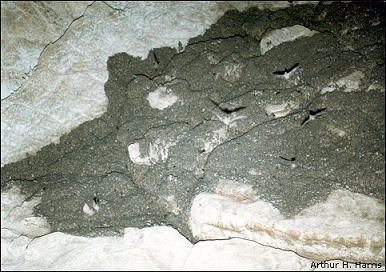

You've probably heard about animals that hibernate. They get very fat in the fall so they can sleep through the winter. But with nothing to get them through the winter except that fat, how do they survive? Our hearts beat faster when we exercise and slower when we sleep, but the heart of a hibernating animal beats much, much slower than usual! This, along with a drastically lower body temperature, conserves valuable energy.
Some kinds of bats, with a usual heart rate of about 660 beats per
minute, hibernate. When they do, their hearts slow to only 30 beats a minute! This
helps them conserve valuable energy. If a sleeping bat is disturbed, its heart speeds
up and its temperature rises, rapidly burning energy. If a bat is bothered too much, it
may die of starvation before Spring. Maybe bats should put out a "Do not
disturb" sign before they retire for the winter so we can help Mother Nature keep
our environment in balance.

Listen to the Audio (mp3 format) as recorded by KTEP, Public Radio for the Southwest.
Contributor: Kodi Jeffery, formerly of the Centennial Museum, University of Texas at El Paso.
Desert Diary is a joint production of the Centennial Museum and KTEP National Public Radio at the University of Texas at El Paso.

Several thousand bats (darker areas) roosting on the roof of U-Bar Cave, New Mexico. Although these bats were not hibernating at the time of the photograph, the appearance is similar to the hibernating roosts of some species. Arthur H. Harris photograph.
Bats. This is a quarterly publication published by Bat Conservation International and should be widely available in libraries. Also, see their website (below).
Bat Conservation International. A site with numerous facts about bats. To find articles specifically about bat hibernation, go to "Search" at the bottom of the menu and then type hibernation into the search form.